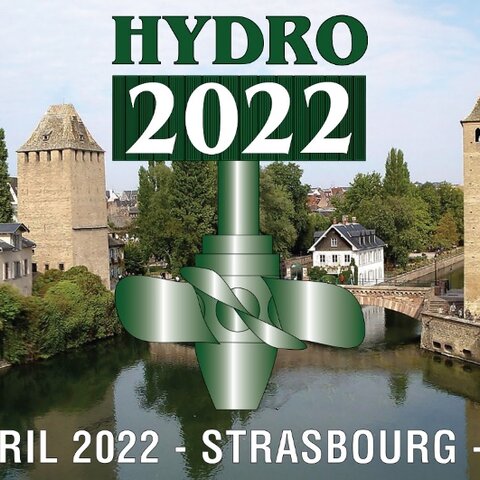In April ATB Riva Calzoni signed a contract that marked the beginning of a new path with interesting growth horizons. The agreement with BC Hydro for the construction of Site C’s hydro-mechanical equipment officially brings the Brescia-based company into the Canadian and North American area. For four years the company will be engaged in the construction of a large 1100 megawatt hydroelectric plant, the third built along the course of the Peace River.
Enrico Camparada, sales manager of ATB Riva Calzoni Large Hydro, explains “In 2015, in the face of an expanding international hydroelectric market, we took stock of the areas where we did not yet have a presence. In the last two years we have consolidated our connection with Canada organizing presentations, road shows, lunch and learn events, meeting people from many companies in the sector. Precise business development strategies have been put in place in our market analyses”. Camparada emphasizes that in recent months, to increase our knowledge of the Canadian national economic system and sharpen our focus on the target, “we have participated in various tenders held by various Canadian public authorities. This first award is the result of a long journey in which we invested with conviction. The agreement with BC Hydro is just the first, extraordinary objective that we are very proud to have achieved”.
An idea of the overall size of the project is offered by the details on the technical characteristics of Site C. The hydroelectric power plant will produce about 5,100 gigawatt hours of electricity every year. This amount of electricity is sufficient to supply 450,000 homes a year. As a third project of the Peace River system, it will obtain considerable advantages in terms of efficiency, exploiting the water already stored in the Williston reservoir. This means that the site, according to estimates by BC Hydro, will produce approximately 35% of the energy produced by the nearby W.A.C. Bennett dam, with just 5% of the entire area concerned. The realization of the work is projected on the future scenario predicted by the Canadian public authority that foresees a 40% increase in the local electricity demand for the next twenty years. An increase that will correspond to an increase in the population and the economic expansion in the north-east of British Columbia. The economic benefits that Site C is bringing to the territory are also to be considered: since the construction started in 2015, the project has created many jobs. In March 2018 there were already more than 2,000 workers on site and many others will be added in the coming months.
In this overall framework, ATB Riva Calzoni was chosen by the client for the supply of the entire HME Package: from the engineering of the hydro-mechanical parts to their production, from transport to the site to supervision in the final installation and commissioning phase. Considering the size of the order Camparada adds “We have organized locally to best meet every operational step. A subsidiary has been set up, ATB Riva Calzoni HydroCanada Inc, based in Vancouver, which will have the task of following the hydropower project step by step, but in a broader perspective will serve to meet the needs of the entire geographical area in general”. BC Hydro expects the works to be complete in 2024.
Meanwhile the civil works and the excavations on the north and south banks of the Peace River continue on the site. As regards ATB Riva Calzoni, the engineering phases began with the signing of the agreement. The first deliveries of the hydropower equipment, which will be built primarily in the Roncadelle workshop, have been scheduled to start in the summer of 2018, but most will take place between 2019 and 2020. Furthermore, for the entire 2018 7 two-year period 2022-2023, ATBRC will have to supervise the installation and commissioning of the hydro-mechanical equipment.
During the design phases, in collaboration with the University of Lausanne, laboratory tests will be performed on a scale model that will be used to verify the correct operation of the main equipment and analyze its dynamic behavior, simulating the most severe operating conditions.
BC Hydro is a Canadian state-owned company founded in 1860. Today the utility produces and distributes electricity to 95% of the population of the province of British Columbia, a geographical area inhabited by over four million people.
The first hydroelectric plant designed by BCElectric, inspired by an idea of the financier Robert Horne-Payne and Frank Barnard, was constructed in 1898 with funds coming from England. In 1928 the control of the company passed to the Power Corporation, based in Montreal.
Twenty years later, the government formed the BC Power Commission, a state-owned company that is credited with having extended the electricity grid to rural or more isolated areas of the province, constructing new hydro power plants, and upgrading the transmission systems. To facilitate the development of the hydropower projects on the Peace and Columbia rivers, in 1961 the provincial government acquired BC Electric, then merged it with the Power Commission to create a new Crown Corporation: the British Columbia Hydro and Power Authority, better known as BC Hydro.
The company experienced a period of significant growth in the 1960s and 1970s. In the following decade it invested heavily in research and development, IT services, and focused on the construction of new generation hydro plants. In the new millennium BC Hydro has worked to raise awareness of environmental protection and encouraged the use of clean energy to meet the growing demand for electricity in British Columbia. Credit: www.sitecproject.com












